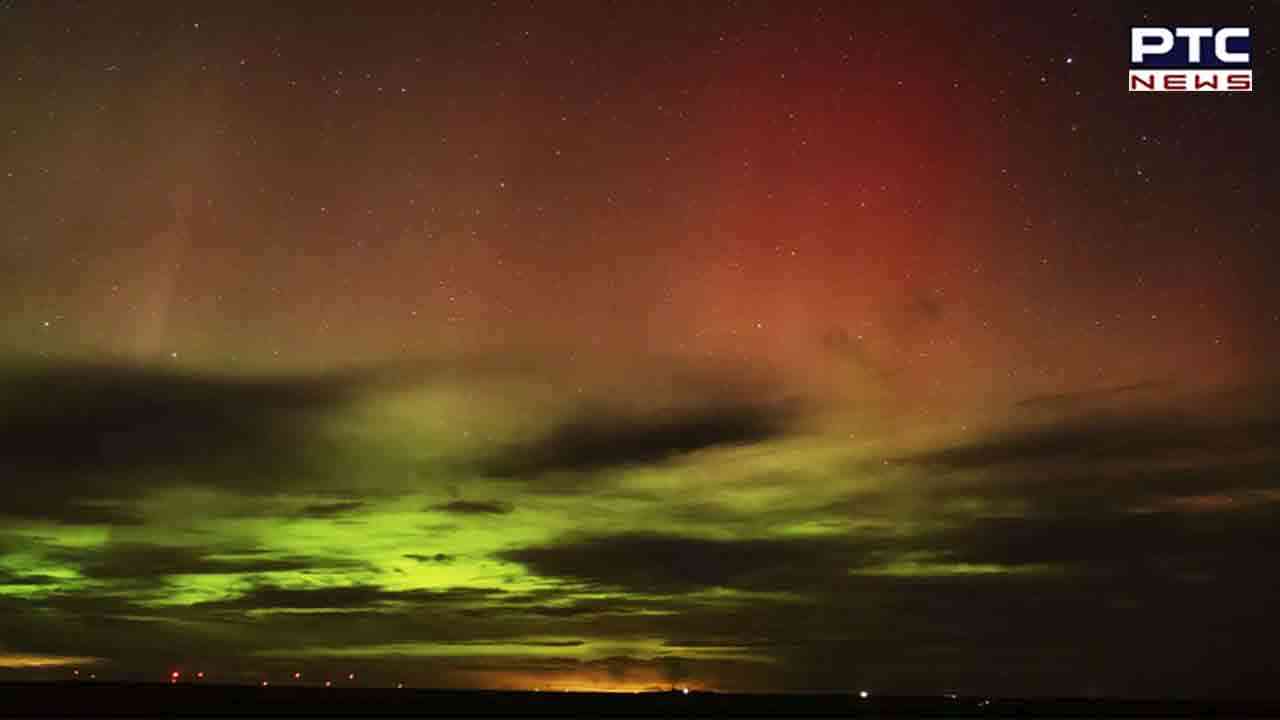Social-media buzzes over rare aurora-like sighting in Ladakh skies
The source at the Hanle observatory said that the “brilliant northern lights” seen over Ladakh in some social media posts were likely fake

New Delhi, May 07: In late April, a timelapse clip of “aurora lights” from Ladakh’s Hanle observatory was tweeted by the Indian Institute of Astrophysics, sparking a social media frenzy.
However, Hanle sources have clarified that it was not the conventional aurora borealis that was spotted, but rather a “stable auroral red (SAR) arc” which is itself a very rare event in Ladakh. SAR arcs are bands of reddish light seen in the sky that display static and monochromatic colors. The event is currently being analyzed by the observatory, but it appears that it was a once-in-a-lifetime event.

Also Read: Online art viewing can improve our mood and well-being: Study
The source at the Hanle observatory said that the “brilliant northern lights” seen over Ladakh in some social media posts were likely fake. The observatory captured the SAR arc in the 360-degree sky camera, but no one was outside at the time to see it with the naked eye.
The night of April 23-24 was an incredible day for aurora-watchers across the world, as a massive geomagnetic storm triggered one of the most widespread displays of northern and southern lights in 20 years, as per some reports. Auroras were seen and recorded over a huge area including Xinjiang province of China, California in the US, Stonehenge in Britain, areas in New Zealand, and Australia.
Director of the Aryabhatta Research Institute of Observational Sciences (ARIES) at Manora Peak near Nainital, Dipankar Banerjee said that during very strong coronal mass ejection events, matter from the sun may penetrate the magnetosphere and lead to aurora formation in places like Ladakh. He also noted that auroras are usually restricted to places close to the poles where charged particles from the sun interact with oxygen and nitrogen in the atmosphere to create the display of lights.
However, it is within the realm of possibility for auroras to form in places like Ladakh. The observatory has ruled out the possibility of the colored light seen over Ladakh being “air glow,” an unrelated phenomenon invisible to the eye but which often shows up as a region of faint color in night sky images.
In 1872, northern lights seem to have appeared in the skies over Mumbai (then Bombay). A paper by Chanchal Uberoi, a retired professor of mathematics at the Indian Institute of Science, Bangalore, quotes from The Times of India, dated February 6, 1872, that reported this unprecedented spectacle.
Also Read: Try these home remedies to help slow down greying of hair
